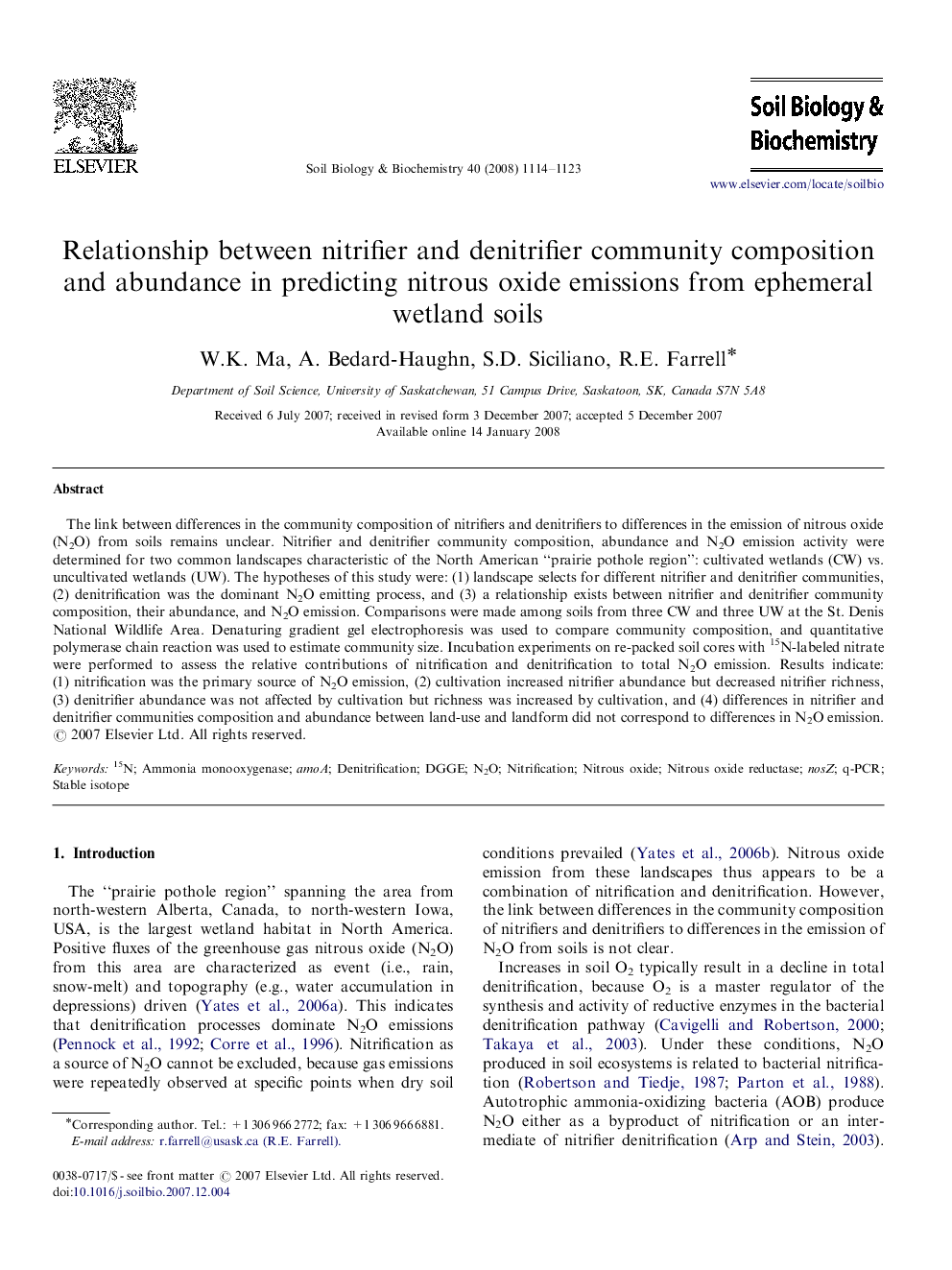| Article ID | Journal | Published Year | Pages | File Type |
|---|---|---|---|---|
| 2026027 | Soil Biology and Biochemistry | 2008 | 10 Pages |
The link between differences in the community composition of nitrifiers and denitrifiers to differences in the emission of nitrous oxide (N2O) from soils remains unclear. Nitrifier and denitrifier community composition, abundance and N2O emission activity were determined for two common landscapes characteristic of the North American “prairie pothole region”: cultivated wetlands (CW) vs. uncultivated wetlands (UW). The hypotheses of this study were: (1) landscape selects for different nitrifier and denitrifier communities, (2) denitrification was the dominant N2O emitting process, and (3) a relationship exists between nitrifier and denitrifier community composition, their abundance, and N2O emission. Comparisons were made among soils from three CW and three UW at the St. Denis National Wildlife Area. Denaturing gradient gel electrophoresis was used to compare community composition, and quantitative polymerase chain reaction was used to estimate community size. Incubation experiments on re-packed soil cores with 15N-labeled nitrate were performed to assess the relative contributions of nitrification and denitrification to total N2O emission. Results indicate: (1) nitrification was the primary source of N2O emission, (2) cultivation increased nitrifier abundance but decreased nitrifier richness, (3) denitrifier abundance was not affected by cultivation but richness was increased by cultivation, and (4) differences in nitrifier and denitrifier communities composition and abundance between land-use and landform did not correspond to differences in N2O emission.
